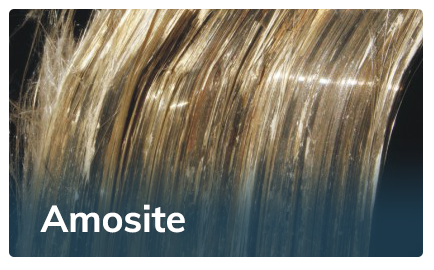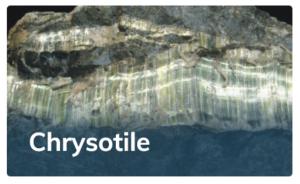
Different Forms of Asbestos
What is Asbestos?
Asbestos is a commercial term. It does not describe a single mineral but a group of approximately 30 different fibrous minerals which differ chemically and structurally. There are six naturally occurring fibrous minerals found in certain types of rock formations that are processed into asbestos. The asbestos group of minerals is divided into the serpentine and the amphibole groups. The serpentines are characterised by long curly fibres while the amphiboles are needle-shaped and of a smaller diameter that the serpentines. The amphiboles are known to be much more harmful to health, and causative of mesothelioma, than serpentines. There is no safe level of exposure to asbestos!
There are three main types of asbestos:
- Chrysotile (white asbestos)
- Crocidolite (blue asbestos)
- Amosite (brown asbestos)



The serpentine group includes chrysotile (white asbestos). The amphibole group includes crocidolite (blue asbestos), amosite (brown asbestos), anthophyllite and tremolite. Of all asbestos types only chrysotile (white), crocidolite (blue) and amosite (brown) were mined or used commercially in Australia. Anthophyllite was mined and used extensively in Finland but not in Australia.
The amphiboles, particularly crocidolite (blue) and amosite (brown) are much more associated with mesothelioma than the serpentines. This is thought to be due to the needle-like shape and small diameter of the amphiboles which it is believed results in their tending to penetrate deeper into the lung and remaining there longer than chrysotile (white), which is more likely to dissolve in tissue fluid or be expelled from the lung.
Asbestos has been described in the past as the “magic mineral”. It is highly resistant to heat and acid, is an effective insulator against both electricity and sound and has tensile strength, and as such has countless uses. It has been processed with cement to make “fibro” wall and floor sheeting, mixed with water and applied damp as insulation to boilers and pipes and used in friction material, such as brake pads. These were its main uses in Australia although it has had countless uses.


